


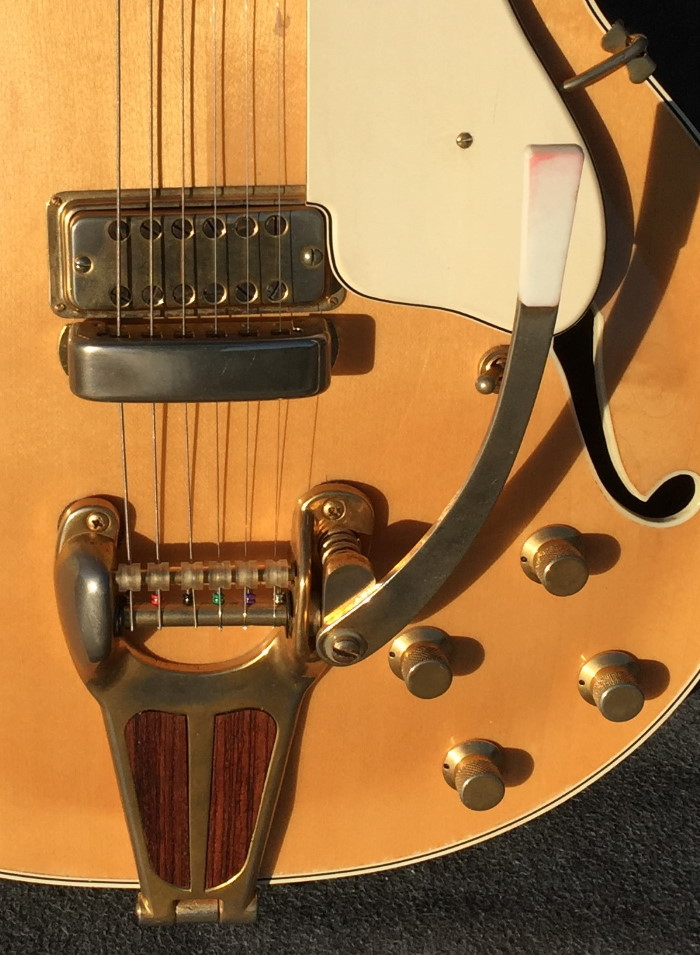
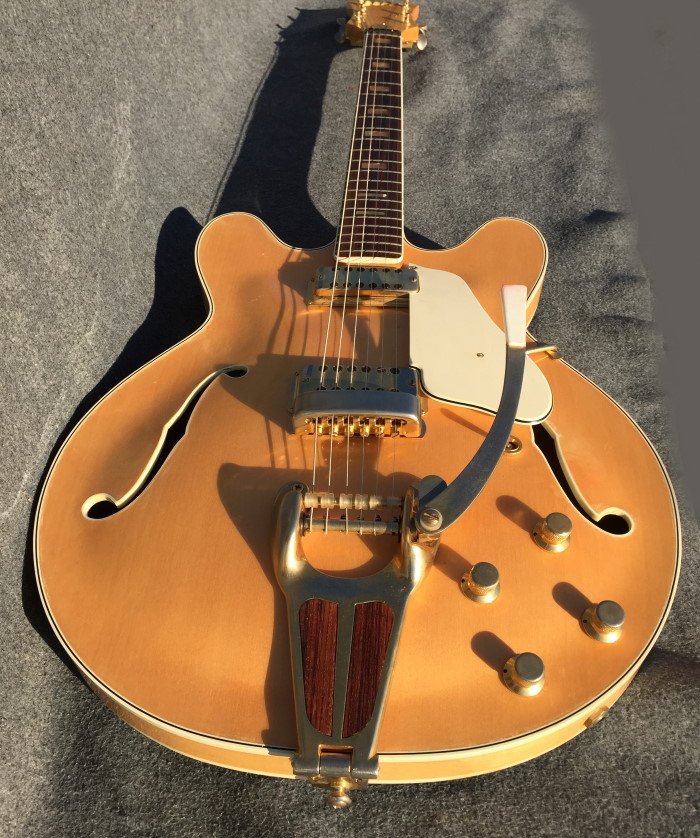
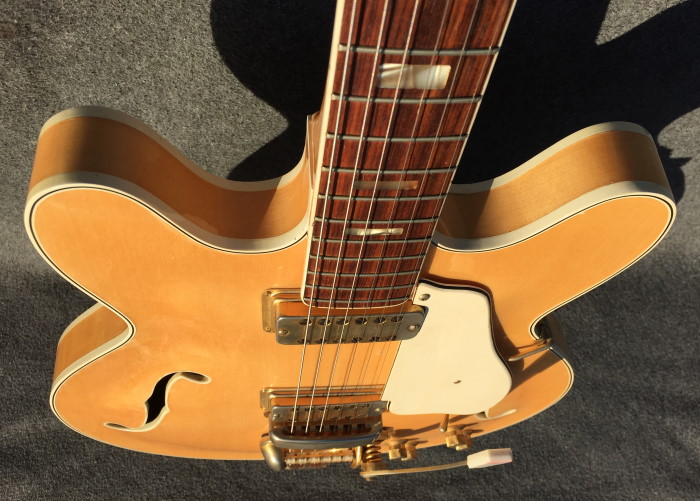
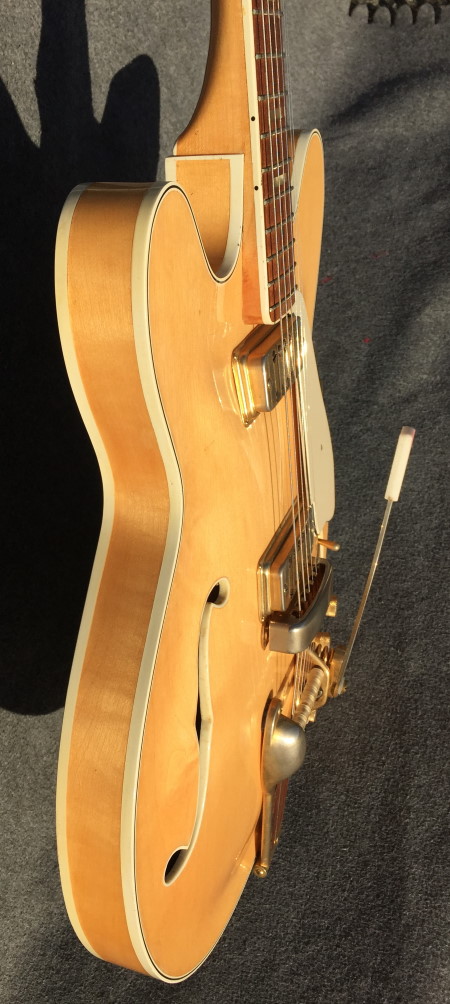
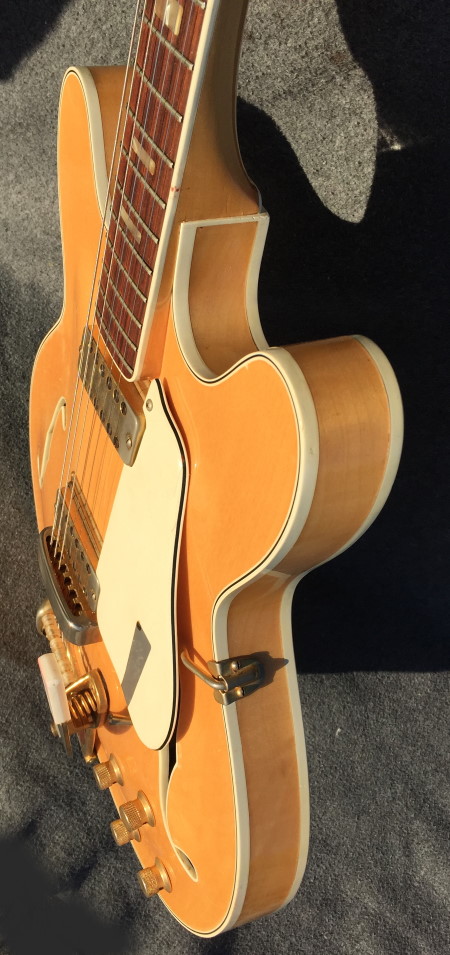
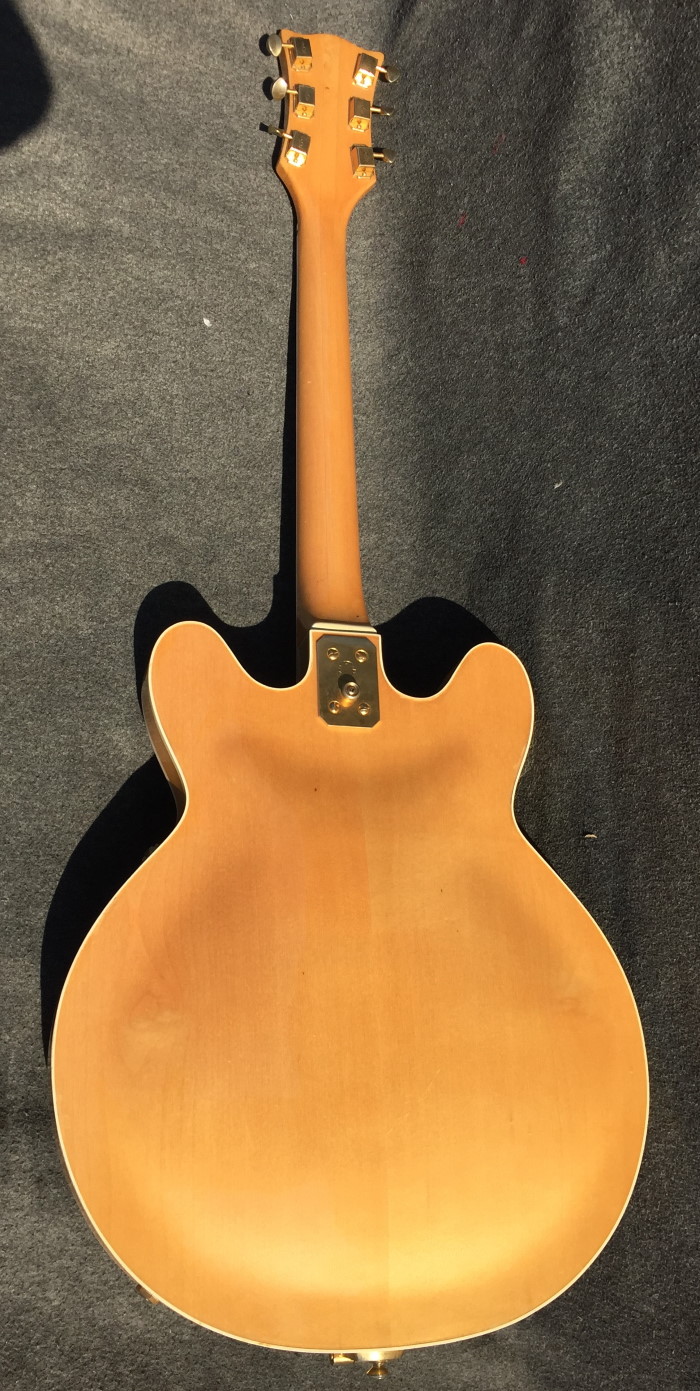
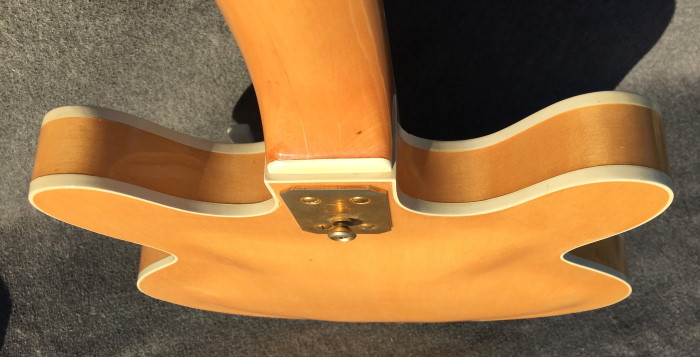

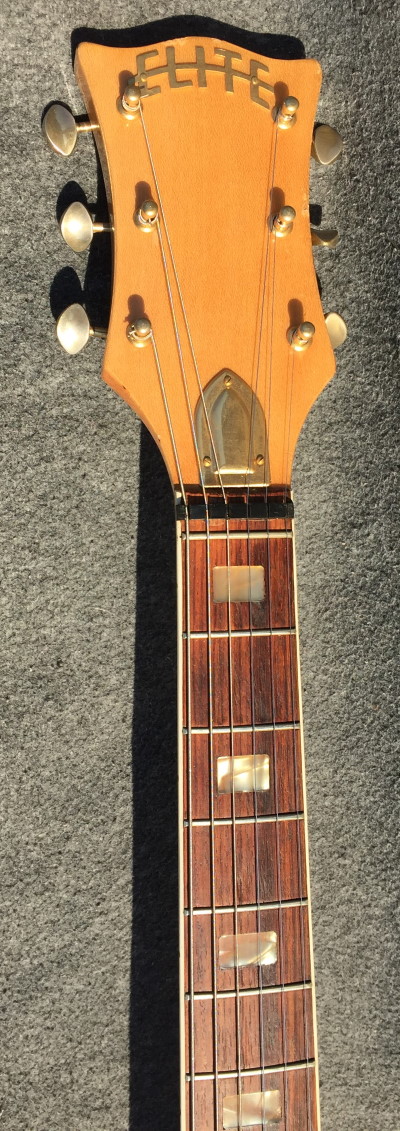
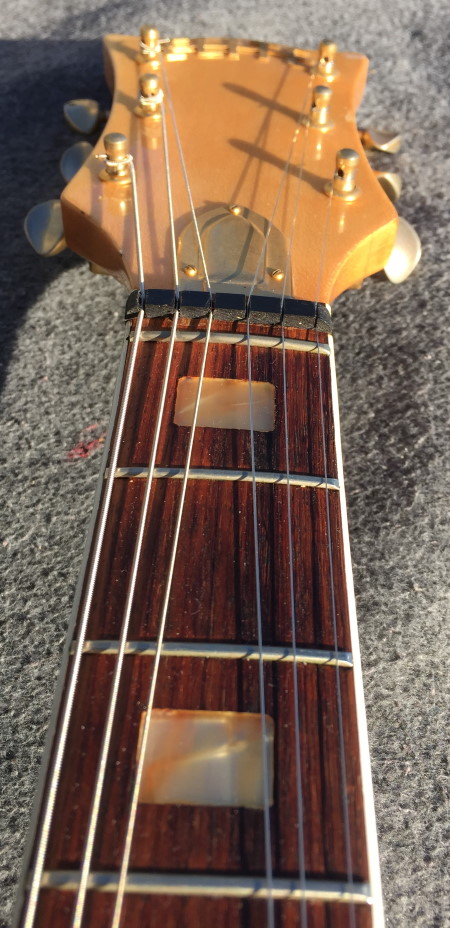


1960 ELITE by Crucianelli Semiacoustic Model Thinline Natural Double Cutaway. Gold Parts, Two Pickups,
A rare model in near mint condition, witout wear , very nice neck with good frets..ready to play Come with Hard Case. The Crucianelli company were the selected manufacturer for the VOX brand in Italy during the 1960s and 70s. Alongside the Vox brand they also produced their own top of the line instruments featuring many of the Vox Style features.
by Jack Marchal
The Crucianelli company was founded in 1888 in Castelfidardo by Sante
Crucianelli, a former partner of Paolo Soprani and also a pioneer of the
regional accordion industry.Facing the crisis that hit the sector in the early
60′s the company diversified its business in guitar manufacturing following
Oliviero Pigini’s example with his Eko company.The relationship to Eko
determines Crucianelli’s whole guitar history. During the glitter celluloid era
of the first half-decade the two companies are in tough competition, for every
Eko model comes out a matching Crucianelli instrument. From 1965 on both
companies increasingly specializes in its own field, Eko focuses on acoustics
and solidbodies, Crucianelli on semi-acoustics, and both cooperate with Vox.
Technical contributions of Eko and Crucianelli melt together on certain Vox (and
even Eko ) models. Olivieri Pigini was planning a merger of both companies’
guitar operations. His sudden death in 1967 didn’t allow the project come to
reality. On the international market any six-stringed thing with a colourful
plastic coating is called an Eko. Crucianelli guitars are very often confused
with Eko and sold as such. Those guitars seldom confess readily their true
origine, they hide inside a maze of brandnames. Some belonged to Crucianelli,
especially Élite and the rarer names Elli-Sound and Custom Built. There were
brandnames given by the official American distributors, PANaramic (by PANcordion
Inc., NYC a accordion company from Ernest F. Deffner.) and Tonemaster (by The
Imperial Accordion Co., Chicago), more or less special models supplied in
contract manufacturing to big OEMs like Vox and Baldwin, there were the brands
applied by American traders such as España, Ardsley, FH, and a crowd of minor
U.S. distributors.
The Beatles and the Mersey Beat boom of 1963-64 were a
giant step ahead for the music — and a step backwards as far as gear is
concerned. All of a sudden the high tech solidbody guitar fell out of fashion
for being too strongly associated with early 60′s instrumental rock music (The
Shadows and Spotnicks in Europe, Dick Dale and the surf music in the U.S.).
The British invasion bands favoured old dual cutaway semis made by Gretsch,
Harmony, Epiphone, Rickenbacker, when not a real Gibson like Eric Clapton in his
Cream era.
Even bass players wanted to go semi-acoustic, which gave fully
unexpected exposure to some European brands (McCartney and his Höfner, Bill
Wyman and his Framus). For all makers issuing an ES-335 copy became an
unescapable obligation. In 1964 the Stratocaster popularity was peaking; in 1967
production was almost discontinued. Meanwhile even Fender had to introduce a 335
copy of its own, the Coronado.
The most experienced in that field among European makers were supposed to be the
German, but their guitars looked a bit too special to make convincing 335 copies.
The Eko 285/Barracuda still was too definitely Eko -like. Japanese models were
still flat out clumsy. Even the U.S. made Harmony and Kay suffered an amateur
image. Crucianelli was one of the few european producers able to offer a
sensible price-to-quality ratio along with the reasonably pro look that was in
demand. Unlike Hagström’s world famous Viking range, Crucianelli’s ES-335-copies
are scarcely visible, being scattered as usual over many brands. They were
nevertheless produced by thousands, under the names Vox, Tonemaster, Baldwin (bodies
only), España, FH, Élite and even (a dire rarity in the electric range)…Elite
Crucianelli!
The 335 hype wasn’t merely a matter of fashion, there were also some practical
reasons behind it. For young people getting a noble piece of nearly traditional
craftmanship as a Christmas present was far easier than extorting from Mum & Dad
some equally expensive crazy sparkle plastic covered shape. A skilled musician
who wanted to make a living in mainstream music or enter a jazz band would have
been unwelcomed with his Wandré or Eko -700, an ES-335 styled guitar made it
easier. Furthermore these guitars allowed home use without the back then so
expensive amplifier. The semi-hollowbodies’ tendency to feedback wasn’t a
problem due to the poor amp power available at that time. On the contrary,
allowing a bit of feedback helped the specific resonance that typified lead
guitar sound in mid-60′s pop music. Around 1969-70 the sudden availability of
high power amplification paved the way to the LesPaul dictatorship, putting a
brutal end to the semi-acoustic’s era of dominance — and to Crucianelli’s guitar
operations as well.